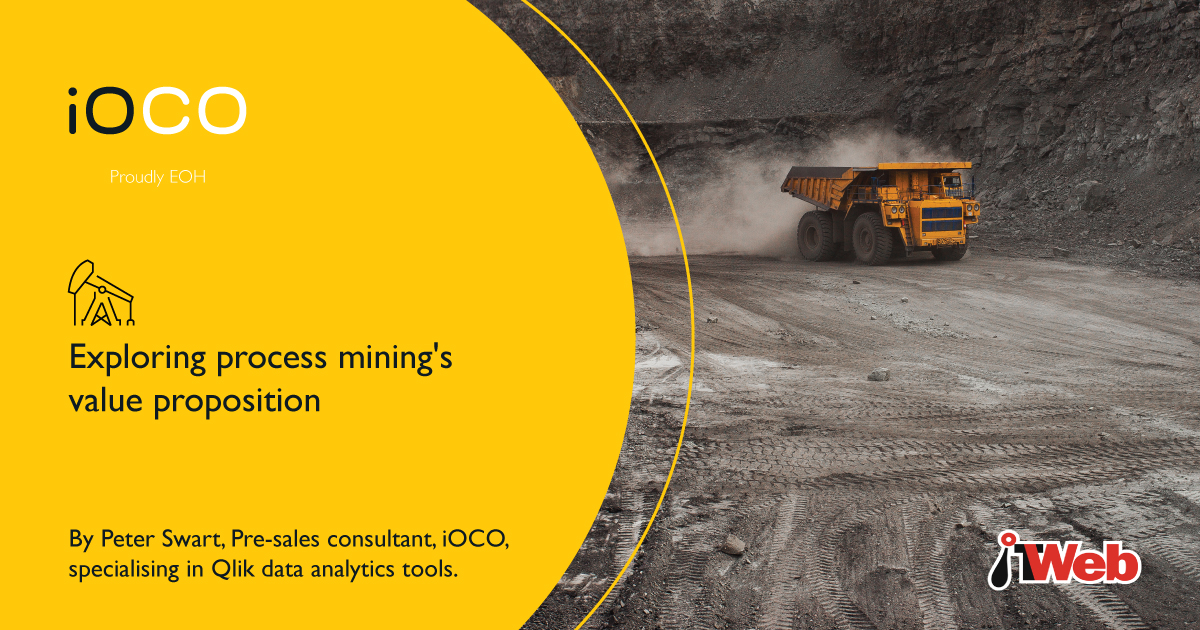Since the efficiency of business processes determines success, it’s vital to get the flow right. Process mining can unveil hidden insights.
Every business is mostly a collection of processes; the quality of the business outcome is to a large extent determined by the quality and efficiency of its processes.
Whether it is the process of evaluating a claim for an insurance company, getting an aircraft ready for departure, or simply delivering an item to a customer, each can be described as a process. The act of paying at the supermarket checkout is a simple process that can determine whether the customer will return to the store.
Getting the flow right is very important, as a typical process has multiple steps, some of which may be optional. Although there are best practice, “happy routes” through each process, in reality the order of the steps change, and the time between them is often governed by things beyond the control of the business owner.
Process mining is a technique designed to address this problem. These tools take in the data of the existing ‘as is’ procedure and shows the user just how many different routes are actually taken between the start and end of it, how long each step takes, and the waiting time between the commencement and end of a task.
It is not just theory. It is saving global companies time and money.
Once the company has a holistic view of it − as opposed to a perception of it – it has the power to improve. It needs to identify which activities are time-consuming and attempt to optimise them. It’s also necessary to reduce excessive wait times between tasks, while reducing the number of routes through the process.
At least one major European airline has used this technique to improve the way it turns aircraft around, speeding up the landing-to-next-take-off significantly. Several online stores have streamlined their customer purchasing experience. It is not just theory. It is saving global companies time and money.
Do you have the data?
Let’s call each step in the process an “event”, and we will call each phase of a route through the process from start to finish, a “case”. In order to analyse a process, an “event log” is needed.
The event log would typically have a series of events, each tagged with a case ID. Each event would have a name, a start and end date and time. Just this small amount of information is enough to commence acquiring useful insights.
Once the business understands what is really happening, it will have the opportunity to change its process, and because it is all so easy to recreate, it can then monitor the impact of the changes.
It may be able to add more insights to process analysis by adding information to each event. Additional data like the name of the person responsible for completing the event or the machine involved in performing the task may reveal that certain people are slower than others, or that using a particular machine results in parts having to be reworked.
The next step is to define a “happy path”. This is the theoretical best-practice sequence of events that is expected to occur. A good process mining tool will allow the business to compare its existing process to the “happy path” and show how reality matches the theory.
When defining a happy path, there are two main approaches. The first is to define the process as it should be. Another way is to look at the frequency of actual routes through the process, as the most popular variant usually reveals the way people actually work. This may be better than just thinking about the best happy path.
A happy path analysis will show whether the required steps are completed or omitted, and whether extra unnecessary steps are included. Once the deviations from the ideal can be seen, the business can choose to fix the actual process, or modify its theoretical path.
It is important to understand that a process may be expected to be the correct one, but if using the tool to revaluate perceptions of the process, a more cost-effective way of doing things may be found. Either way, there will be a better understanding of the business and it may end up saving money as well.
Powerful process mining tools, with very little effort, facilitate the loading of a simple event log file into an app where the business is able to visualise the entire process as a flow diagram. Each process variant can be explored and compared with other variants.
Processes can be compared to happy paths and are given conformance scores which reveal how close a process is to the desired path.
Much of the analysis is done through a sophisticated process exploration component. This provides an explorable flow chart of each route through the start-to-end process. It also shows the volumes, durations and average wait times for each step in the process.
Once there is a real-time process analysis, action can be taken in the form of automated task assignment to employees or systems. Tasks are automatically assigned based on set rules, which saves time and increases coordination. Completing these actions can be done either through an alert system, a dynamic workflow, or automated through other systems.
Process mining tools provide a deeper understanding of exactly how the business runs − now that’s something into which every business owner or executive is keen to gain deep insight.
Written by: Peter Swart, Pre-Sales Consultant, Specialising in Qlik Data Analytics Tools
Originally featured here



